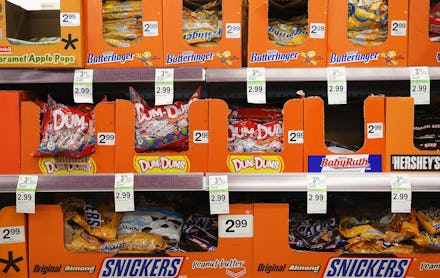Does candy go bad? Here's what you need to know about your Halloween loot.

While grocery aisles stock up on fun-size edible treasures about as soon as the first cool breeze hits to gear up for Halloween, those Nov. 1 candy sales are equally hard to resist. For those candy hoarders who know how to make a pillowcase of goods last, dust-covered candy may wind up lurking in the cabinets for months, if not years — but is that candy actually still safe to eat?
According to a spokesperson for Hershey: "There is an ink stamped 'BB' or 'Best By' date code on all products from The Hershey Company. This best by date represents the month and year until which the product is expected to be within its peak freshness."
Chocolate needs to go sooner
From a health perspective — which, of course, would entail consuming candy sparingly to begin with — eating candy within a certain timeframe is best if you're going to indulge. "Most Halloween candy is safe to consume eight months to a year after it's production, though it often doesn't have an expiration date on the package," Vida Health nutritionist and head of coaching Jennifer Gibson said in an email. "For chocolate-based candy, it's probably best to not keep after six months, and you'd want to discard it if there is any discoloration" — but who has the willpower to keep chocolate candy in their house for over six months?
And if you who think you can sneakily pass off this year's sale candy as next year's trick-or-treat loot, that's just cruel. "If your intent is to save candy to hand out again next year, it's best not to bank on it lasting, either from little hands sneaking in when no one is looking or because of shelf life," Gibson said.
Just eat your candy before May; it's for the kids.